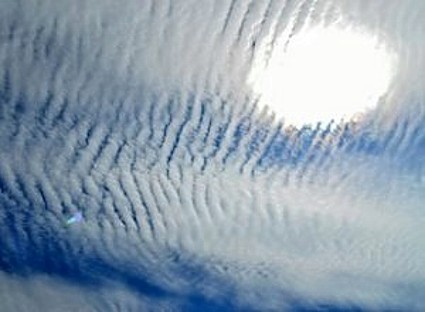March 21, 2020 – Let me start this discussion with the following. In response to the latest simulation study of aerosol solar geoengineering by University College London (UCL) and Harvard University, Peter Irvine, Professor of Earth Sciences, concludes:
“Our results suggest that when used at the right dose and alongside reductions in greenhouse gas emissions, stratospheric aerosol geoengineering could be useful for managing the impacts of climate change. However, there are still many uncertainties about the potential effects of stratospheric aerosol geoengineering and more research is needed to know if this idea is truly viable.”
I would like to throw my two cents at the geoengineering scientists who continue to explore this scientific black hole. I’ve written about this in the past, but I cannot overemphasize how real experiments in the physical world involving such madcap ideas as continuous spraying of aerosols in the stratosphere, or iron ocean seeding, or releasing giant sunshade satellites in space, have unknowns of enormous consequence.
Back in 2015, I wrote a piece on this site called, “The Collapse of Western Civilization – Speculation on Our Future.” I had read a work of fiction that laid out a narrative future that in some respects parallels our current events. In it, the authors described the lack of action by governments throughout the first half of the 21st century leading to a desperate geoengineering effort in 2059. The decision to spray submicrometer-sized sulfate particles into the stratosphere initially drops global atmospheric temperatures but with an unintended consequence. In the fourth year of the experiment, the Indian Ocean Monsoon turns off and havoc in South Asia ensues. The experiment ends and the subsequent atmospheric rebound sees spikes in global mean temperatures of 5 Celsius (9 Fahrenheit).
Fortunately, all of the work being done so far at UCL and Harvard is in simulation with climate-chemistry models showing how the deployment of sulfur particulates or sulfur dioxide released at different latitudes in the tropics could affect global warming. The simulation maps the impact of the aerosol releases on precipitation, and extreme weather events. So far in simulation, the opposite of the dire scenario being described above is being seen. Instead of the collapse of the monsoon, the model shows increased precipitation.
Professor David Keith, a co-author of the study, and resident at the Kennedy School of Engineering and Applied Sciences at Harvard asks the question: “Should we trust the models? Uncertainties are deep and no single result is trustworthy.” Keith has been speculating for a number of years on doing atmospheric geoengineering experiments as a cheap and easy way to solve global warming. But even he now is asking the important question for which I have a response. “Heck, no. We can’t trust this type of speculative science.”
At best geoengineering is on the fringe of legitimate science. At worst it is the lunatic-fringe. I call this type of scientific investigation, curiosity-driven. Try X to see Y. The same approach I used to take when playing with my chemistry lab in the basement of my parents’ home.
You can simulate all you like on computers, but by putting it into practice you turn the entire atmosphere into a laboratory experiment. The end results could be disruption to seasonal weather patterns that harm food supply, heavy downpours that flatten crops, unanticipated droughts or enhanced ones in drought-prone regions.
With the concurrence of the vast majority of scientists who study the world’s climate, there is a solution to global warming. It is to decarbonize human activity to a sustainable level where we achieve a net-zero emission status for the whole planet. Then we let nature heal while we adapt to our new normal, a world warmer on average than any we have previously experienced in human history.
Mitigate and adapt are our marching orders.
Geoengineering is a crapshoot and, once and for all, should be dropped in the dustbin.

















[…] Geoengineering is already happening here on Earth in the first direct-air-capture (DAC) carbon dioxide (CO2) projects that hope to reduce greenhouse gas (GHG) emissions from the atmosphere. These facilities aren’t capturing CO2 from the smokestacks of existing manufacturing and power facilities, but rather from ambient air. That’s why I classify them as geoengineering rather than putting them in the same category as carbon capture and sequestration (CCS) and carbon capture and utilization (CCUS). […]